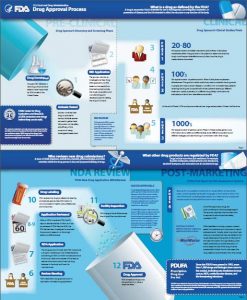
Clinical trials are comprised of a series of phases, focused on comprehensively investigating an experimental treatment or medication’s side effects, effectiveness and safety. All medications or treatments must sequentially complete the clinical research phases before moving on to FDA consideration for release to the general public.
When an experimental medication comes into a clinic, researchers assess its benefits and shortcomings. Some of the questions researchers are looking to answer may include:
The breakdown of the four clinical trial phases is as follows:
During this phase, researchers pay particularly close attention to the way study volunteers metabolize the administered medication. Phase I trials are designed for a relative small number of healthy participants and typically last a few weeks to several months. Certain clinical trials may call for volunteers who are impacted by a specific cancers or conditions.
Phase II: Further safety and efficacy evaluation on a larger group
Phase II of a clinical trial may span several months to approximately two years. During this period, researchers evaluate the wellbeing of a group of volunteers who receive the experimental medication against a “control group” who received a placebo. This is done to ensure statistically valid data and to help rule out alternative explanations for study results.
According to the U.S. National Library of Medicine, the primary goal of phase III is “to confirm the experimental medication’s effectiveness, monitor side effects, compare it to commonly used treatments, and collect information that will allow the drug or treatment to be used safely.” Phase III studies may last anywhere from 1-4 years and offer the FDA and manufacturers a deeper understanding of the benefits and caveats of a treatment.
Phase IV trials, otherwise known as post-marketing surveillance, occur after the experimental drug has been approved marketed. This stage offers manufacturers further insight into the medication’s comparison against other treatments currently on the market. Phase IV trials also serve to highlight the long-term benefits of the treatment in a much larger patient population size.
At OCRC, we offer a variety of clinical trials and research studies in which you can participate in our state-of-the-art clinical research facility. The Phase I-IV clinical trials that we specialize in range from 6-7 months, and test investigational medications being developed by pharmaceutical and biotech companies. All participants receive all treatments and medical care related to the trial. Additionally, participants may be compensated for time and travel. Health insurance is never a requirement.
If you are interested in participating, please tell us a little more about yourself in the Current studies section of the home page and we will respond to you to determine your eligibility for current and future studies.

Learn more about clinical trials at clinicaltrials.gov.
